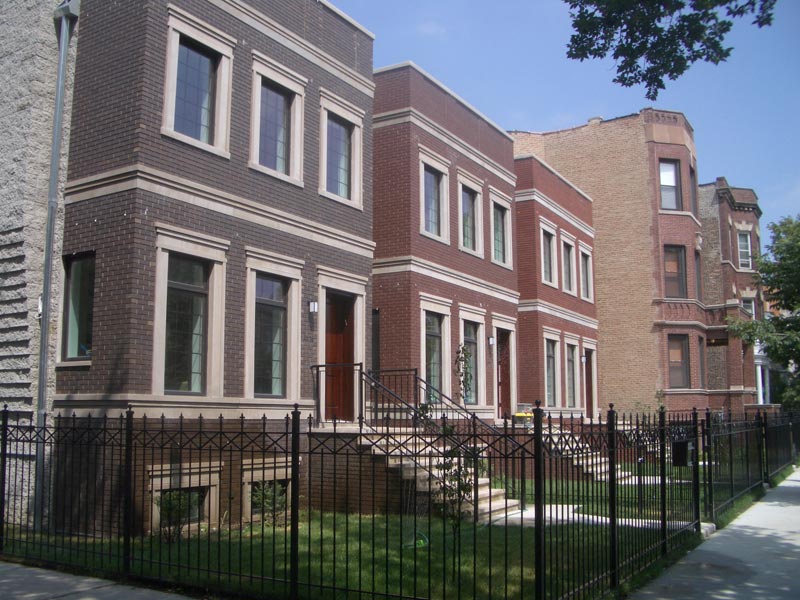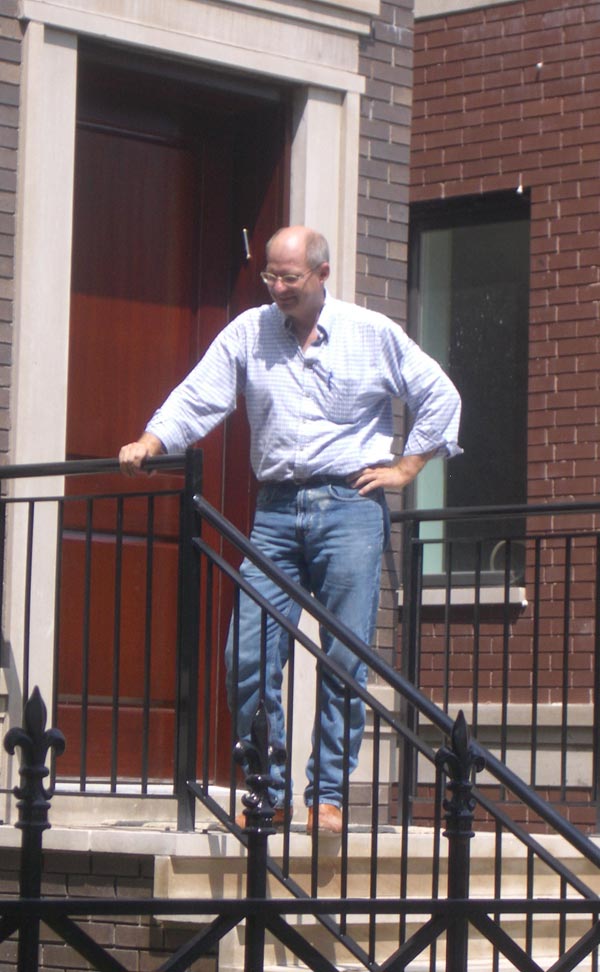 You might expect the guy who built and sold one of the more expensive “green” houses in Chicago to be a lifelong environmentalist whose crusade is finally paying off. But no: Paul Ahlrich initially jumped onto the green housing bandwagon for the potential payoff. “I did these [houses] to learn how to build green so I could keep making money in a bad market,” Ahlrich says of the houses at 2652, 2656, and 2658 West Walton Street; the westernmost house (2658) sold on July 27th for $923,000.
You might expect the guy who built and sold one of the more expensive “green” houses in Chicago to be a lifelong environmentalist whose crusade is finally paying off. But no: Paul Ahlrich initially jumped onto the green housing bandwagon for the potential payoff. “I did these [houses] to learn how to build green so I could keep making money in a bad market,” Ahlrich says of the houses at 2652, 2656, and 2658 West Walton Street; the westernmost house (2658) sold on July 27th for $923,000.
Ahlrich has been rehabbing old homes and building new ones in Ukrainian Village and thereabouts for 20 years. He hadn’t paid much attention to energy efficiency or resource waste until about two years ago, when he decided he needed to distinguish his houses from others. At the Center for Green Technology, he found an economic model he thought might work.
Wrapping his houses extra-tight and sealing every gap would add 8 to 12 percent to the price of the house, Ahlrich calculated—not so much that he would price himself out of the market. So he built the houses on Walton with ELFI wall panels (thick insulating styrene in an aluminum framework) and three inches of nonformaldehyde insulation inside the masonry exterior. The roofs are recycled cellulose with a very high insulating factor, R-42. (Bathroom walls have the same product, to block sound.) There is an extra layer of insulation beneath the basement floor, to act as a thermal barrier to prevent the winter cold from seeping in. Even the cans surrounding the recessed lights are insulated against heat leakage.
The result: Evaluators rated Ahlrich’s houses as needing only 40 percent the furnace and air-conditioning strength of a conventional house the same size. “That’s true energy performance,” Ahlrich says. “My buyers are using 40 percent of the energy to heat and cool the house. That money stays in their checkbook every month.”
There are other green touches that speak more to healthy use of resources than to energy efficiency: Floors and cabinets used certified renewable wood harvested within range of Chicago (as opposed to bamboo, which has to be shipped across continents at a high energy cost). Paints are all low in volatile organic compounds, and floor stains are water-based.
Having sold one of the three houses in a slow market, Ahlrich feels vindicated by his choice to go green. “I’m a big return-on-investment guy,” he says. He expects to get even greener in future projects—and at a lower add-on price. “Now that we’ve learned how to do all these things, we can probably do them for less the next time,” he says.
Like a lot of converts to green or sustainable building methods, Ahlrich notes that much of what he has done should have been standard in the building industries years ago. “Our quality has gone up because of [focusing on] energy efficiency,” he says. Window openings used to get a few shims to hold the shape, and then get wrapped in aluminum. Now they are filled with an insulating foam and then sealed with a caulk that dries super-tight.
Ahlrich has plans for several other energy-efficient projects, including a new home for Lincoln Park’s Red Lion Pub and, a few years out, a multi-acre subdivision on the city’s West Side. He even changed the name of his company: from Ronin, a Japanese term meaning ‘warrior,’ to Grun—German for ‘green.’
 You might expect the guy who built and sold one of the more expensive “green” houses in Chicago to be a lifelong environmentalist whose crusade is finally paying off. But no: Paul Ahlrich initially jumped onto the green housing bandwagon for the potential payoff. “I did these [houses] to learn how to build green so I could keep making money in a bad market,” Ahlrich says of the houses at 2652, 2656, and 2658 West Walton Street; the westernmost house (2658) sold on July 27th for $923,000... " />
You might expect the guy who built and sold one of the more expensive “green” houses in Chicago to be a lifelong environmentalist whose crusade is finally paying off. But no: Paul Ahlrich initially jumped onto the green housing bandwagon for the potential payoff. “I did these [houses] to learn how to build green so I could keep making money in a bad market,” Ahlrich says of the houses at 2652, 2656, and 2658 West Walton Street; the westernmost house (2658) sold on July 27th for $923,000... " />



